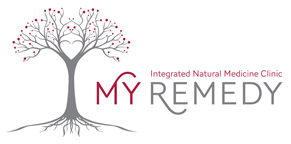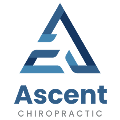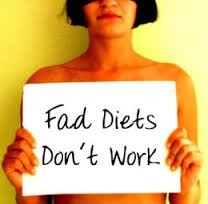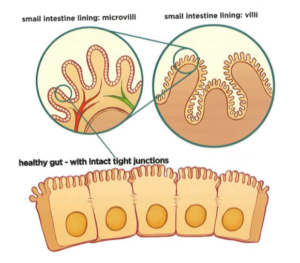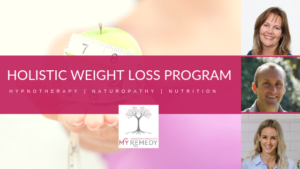FAD DIETS AND HEALTH TRENDS
(Courtesy of www.puraty.nz)
I have been looking back at the health trends of 2015. Every year has its own trends, and 2015 was no different, but how those trends have changed over the years!
Thinking back 2015 was the year of low sugar, no sugar, clean eating, green juicing, gluten-free, paleo, fodmap, and vegan and for us in clinic, a particular rise in those seeking to learn about food intolerances as distinct from allergy.
We seemed to embrace the concepts of eating less processed foods and cleaner, green, and plant based foods. There was a lot of emphasis placed on eating a health-full diet rich in nutrient dense, organic foods. People became a lot more knowledgeable about their health issues, which is a good thing in my opinion, and were willing to try new things out, embracing foods like kale, quinoa and bone broth.
I was happy to see a real swing towards the reduction of sugar consumption. After reading the book SWEET POISON by David Gillespie some years ago, I have been keenly learning anything I could about the subject and, of course, research is showing the dangers of ingesting high sugar foods which set us up for metabolic changes, obesity, heart disease, cancer and diabetes – or the new buzz word – diabesity. Finally we are realising that sugar is an addictive food, an addiction like any other addiction which takes years off your life and messes with your quality of life. The amount of hidden sugar in processed foods is a serious problem for us as a community, and worldwide, given its ability to be the root cause of such widespread health problems.
Another big buzzword in the world of gut health – and those of you that know me will know this is my special interest in clinic – is GUT FLORA! The focus on improving our gut health by consuming probiotic and prebiotic rich foods like kefir, sauerkraut, kombucha and bone broth grew exponentially in popularity as people began to notice a change in their gut health. Natural digestive enzymes and probiotic supplements and foods became much more mainstream. Good stuff!
Meat free days have been popular as we favour a plant based diet – this unprocessed approach to food is brilliant in my opinion. An easy to digest diet of organic veges, plant based protein sources, protein powders, whole grains, nuts and seeds for fibre, gorgeous green smoothies and lots of pure water for hydration, with good fat sources thrown in, provide nutrient packed punches which our bodies just thrive on. There has been a big swing to the knowledge that some fats are actually good for you and that our bodies need a certain amount of healthy fats in our daily diet.
Speaking of green smoothies, Instagram was full of celebrities and models sipping green juices and smoothies – because it was healthy or fashionable? – who knows, benefit of the doubt sort of thing, but great none the less as the media coverage encouraged the general public to have a go too – and guess what? They don’t taste like cow feed, or grass and tomatoes – they actually are yummy, and good for you! Because New Zealand soils are known to be low in trace minerals, nutrient rich shots like these can stop deficiencies occurring. It’s so simple. A few Brazil nuts a day will cover all your selenium needs. It doesn’t have to be complicated.
Luckily these days there is research to back up these dietary changes. In earlier years, the Powers That Be took the decisions for everyone and changes were made accordingly.
Low-carb, low-fat, gluten-free, natural, organic — there’s no question that we can become obsessed with food and the latest trends. Health experts are always on the lookout for the latest trend and improvement, regulating what’s in our diet and how much of it we should really have.
Looking back at trends of the past I discovered:
The 1950s: Housewives and Home Ec (or Home Economics for those of you born after 1980!)
Marriage was the pinnacle of achievement for women. If you weren’t married by the time you were 23 your parents were seriously looking at other modes of employment for you – being a good wife, mother and homemaker was the goal and so Home economics classes were taught, so women could learn how to cook and sew and make a home.
In the 50’s diets focused mainly on animal protein, rich golden butter, eggs, milk, red meat or poultry were in most meals. The time of meat and 3 veg. Whole raw milk anyone? Funny how things come full circle.
The 1960s: The Age of Aquarius
As wars and unrest shook the world, and the Peace movement was born, those 50’s housewives were watching their offspring become flag waving ( and not the patriotic kind), bead wearing, beatniks who embraced a largely vegetarian diet as a means of protesting about commercially-packaged, mass-produced food. Food co-ops became popular and still operate to this day. Purchasing from factory farms and large chains became an issue because of raging debates about the effects of chemicals in the food chain. Well, we know that particular argument goes on to this day, and rightly so!
It was around this time, in America, that nutritionists encouraged less calorie consumption, therefore avoiding foods with high levels of fat, cholesterol, sugar, and salt. This is when foods such as beef, eggs, and butter began to be blamed for the nations growing girth.
The 1970s: A balanced approach v diet crazes
The need for whole foods continued into this decade and we learnt more from nutritionists like Adelle Davis of the benefits of unprocessed foods and vitamin supplements, and the dangers of saturated fats and excess sugar. I think Ms Davis’ books were amongst the first I bought on the subject of nutrition from the second hand book store. Natural, additive-free foods were in demand, with an emphasis on unprocessed ingredients. The organic food movement also emerged, as more stores began carrying organic produce.
Diet Crazes took off in the 70’s as well – who can forget Richard Simmons in his fluoro shorts, mad afro curls bouncing all over the place. Diets like the Atkins Diet, The Grapefruit Diet and the Scarsdale Diet were introduced then, but there were also weird diets, like the “cookie diet” which is self-explanatory unfortunately.
The 1980s: Jazzercise, Aerobics, and Low-Fat Everything
Ahhh, the leg warmers! Olivia Newton-John got physical! This decade birthed fitness mania, as neon-clad gym goer’s jazzercised their way to health, and nutritionists again started looking at fat. Or more specifically, dietary fat.
This is because research at the time showed that dietary fat was the “single most” important change necessary to improve the nation’s health. We in New Zealand, whilst having our own excellent resources, have watched the US keenly to see what they are doing – and so these things usually trickle down to us at some point.
So now it was less fat, more options from all the main food groups and more starch and fibre.
The 1990s: The Food Pyramid, Nutrition Labels, and Low Carbs
And if your head wasn’t spinning by then – The Food Pyramid was born! – The pinnacle of health information to date! It was supposed to be the symbol of a balanced diet but still nutritionists, doctors and health experts argued about its merits. Particularly because it encouraged people to eat several servings of grains per day. And so this is where the counting carbs fad began. Also, legislation was introduced to make producers label their food, so we knew what we were eating – that was the plan anyway!
The 2000s: South Beach, Master Cleanse etc
Because obesity was, by now, rife all over the world, this decade was home to diet crazes like the South Beach Diet, liquid diets, master cleanses, fruit diets, the egg diet and the absolutely ridiculous Maple Syrup diet! Scientists also proved the link between “bad fats” and higher rates of heart disease so things changed again.
Paleo, FODMAPS, Clean Eating, Vegan or Vegetarian and Gluten-Free
And so here we are, in the 2010’s, asking for cleaner and more sustainable pesticide free food sources, more transparency with regards to food labelling , Non GMO and GE free food sources,
In terms of trends, we see Paleo, FODMAPS, Clean Eating and Gluten-Free due in part to the larger number of people with transient food intolerances and the growing number diagnosed coeliac in this county.
I think, if you are not sure about nutrition, do your research. Fads are rarely sustainable, but long term good healthy eating practices are. In a previous blog I talked about EATING A RAINBOW that is a simple and easy place to start! Consult a health professional who knows about these things and can help you on your way! And, seriously, take all the fads with a grain of salt!!
